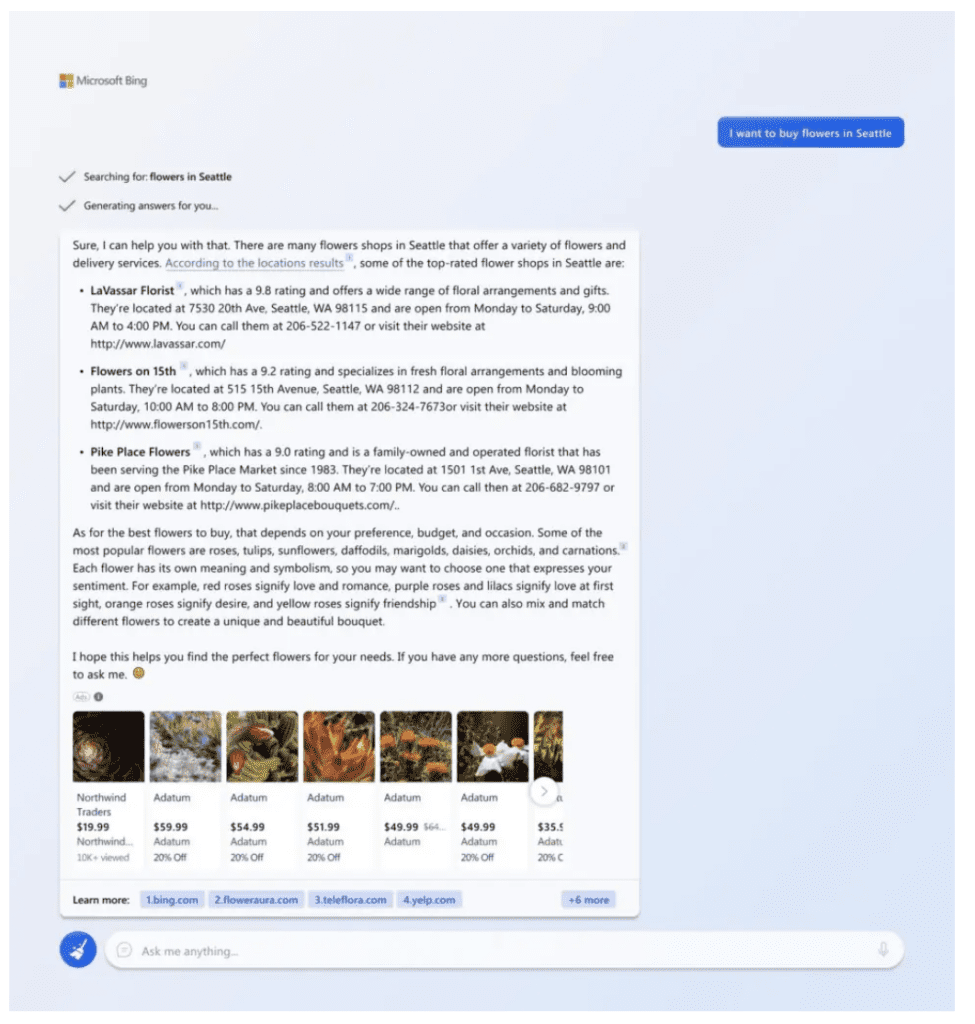How will search engines such as Google Search and Microsoft Bing generate advertising revenue via conversational AI? This question has been hotly debated ever since Google and Microsoft launched their own conversational chatbots in their search engines. After all, conversational AI tools succeed by giving searchers concise responses instead of links to other sites. Google’s ad model depends on people staying engaged on Google Search clicking on links. Microsoft’s ad business, though nowhere near the size of Google’s, also depends on clicks and engagement.
Microsoft recently provided some guidance on this question. According to Kya Sainsbury-Carter, corporate vice president of Microsoft Advertising, the method of purchasing advertisements on Bing remains unchanged from its inception. However, a new feature now allows ads to be integrated into interactions with an AI chatbot. Advertisers will not be required to request for their ads to be included in the chat format, and they won’t be notified if their ads were displayed in this manner when they get performance reports.
She noted that whenever the AI chatbot provides a response, it includes a reference that can be viewed by hovering over the response. This citation may occasionally contain an advertisement link. Furthermore, image-based ads can be displayed following the chatbot’s reply. Companies aren’t required to create new content that replicates the style of a chatbot response. Rather, all text advertisements and other creative resources uploaded on Bing will be displayed in the new chat formats.
Here is an example courtesy of Microsoft:
Bing has expanded to 100 million+ daily active users, according to the company, with one third of them utilizing the AI chat feature every day. Since February and the roll-out of its AI-driven search, daily downloads of the Bing mobile app have quadrupled. Microsoft recently moved its AI-chat product from limited preview to open preview (thus eliminating the waitlist for trial). This should expand the product’s user base.
Microsoft also noted that:
- The advertising products within Microsoft’s AI chat will function based on the same auction principles as Bing search auctions, indicating that advertisers may not necessarily experience an increase in cost per click.
- Advertisers have told Microsoft they favor visually engaging, immersive advertising experiences, increased automation for real-time ad placement optimization, and formats that support shoppable experiences, such as visual comparison designs or shop-the-look formats. In fact, Microsoft intends to make chat more visually appealing.
- With the updated Bing, users request more product information within a shorter duration compared to conventional search. This implies that the AI-driven tool could offer advertisers more insights about users and expedite their transformation into buyers.
These developments are intriguing. We recommend that advertisers be open to the way conversational AI is evolving. At the same time, advertisers:
- Need to challenge Microsoft on issues such as accuracy of conversational AI and bias. It’s essential that users trust conversational AI in order for these tools to be adopted.
- Should have control over ad placements and whether they choose to show ads in the chat. How can an advertiser judge success of an ad placement when it’s unclear whether an ad shows up in chat?
- Deserve visibility into how the ad performs specifically when showed in the chat. Google (and Bing) have been reducing advertisers’ visibility into search queries, placements, and ad performance in general.
Contact True Interactive
At True Interactive, we advocate on behalf of our clients. We are monitoring these developments closely and assessing how to incorporate conversational AI. Contact us to learn how we can help you succeed in all forms of digital advertising.
Image source: https://unsplash.com/@rubaitulazad

